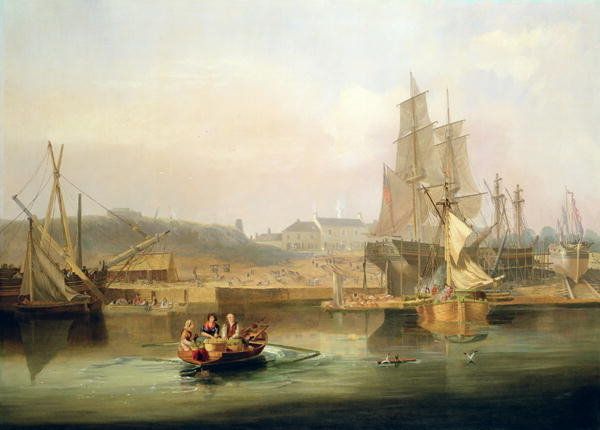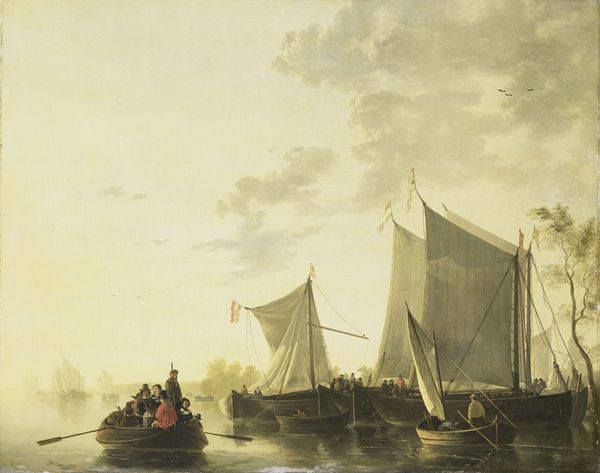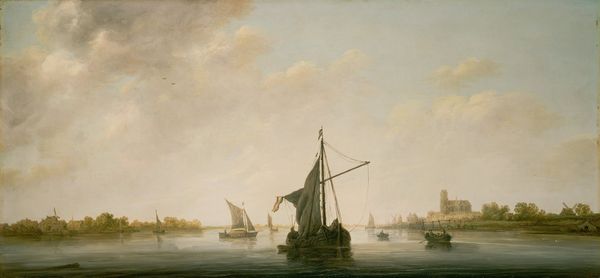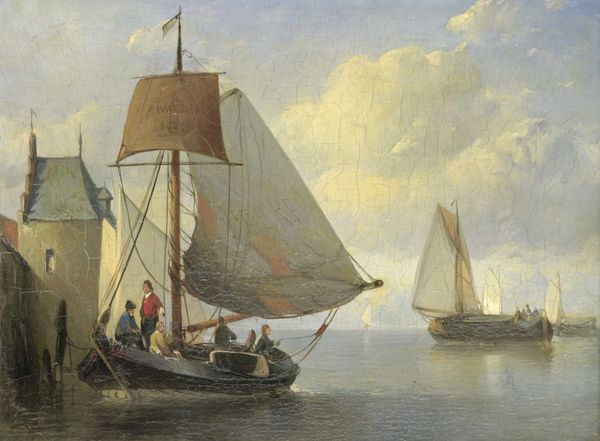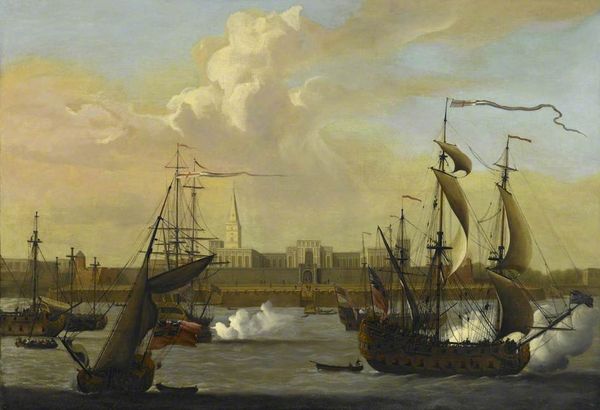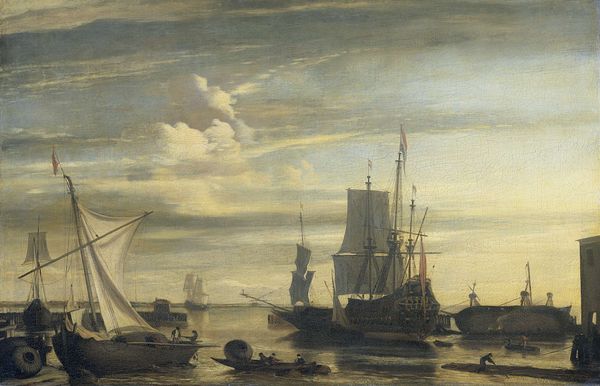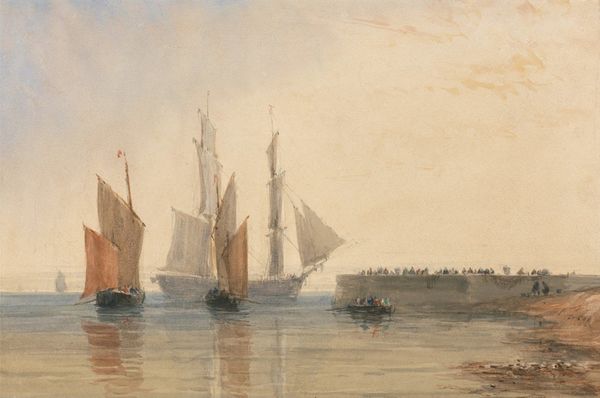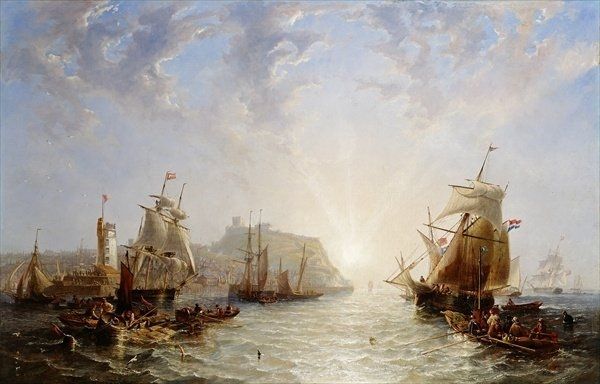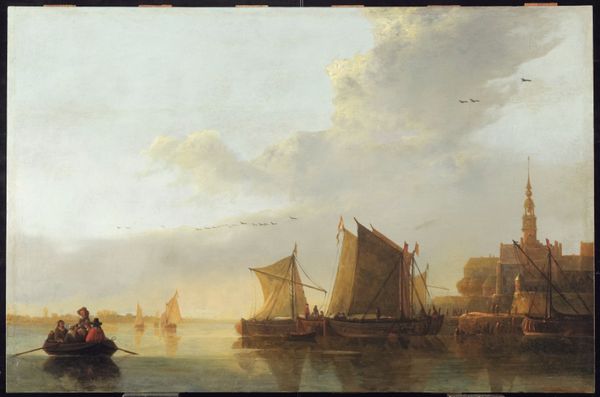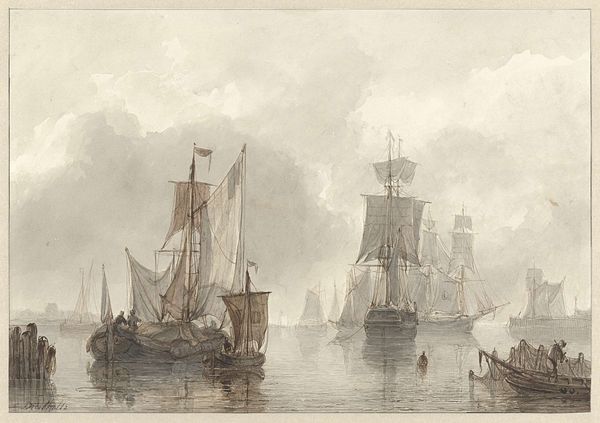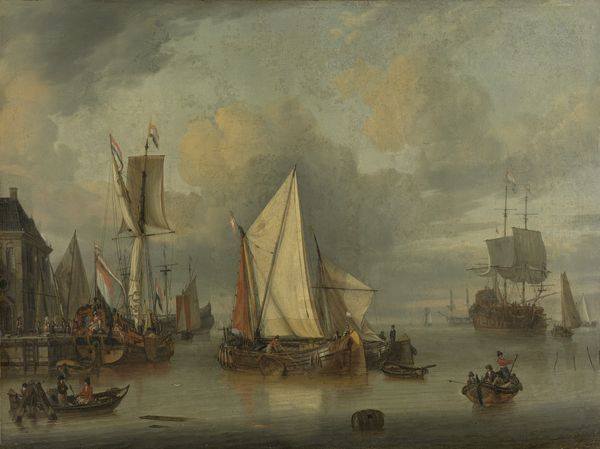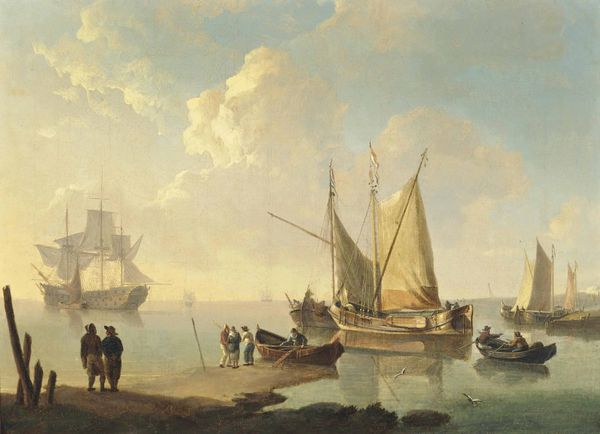
painting, oil-paint
#
boat
#
ship
#
painting
#
oil-paint
#
landscape
#
romanticism
#
water
#
line
#
cityscape
#
genre-painting
#
realism
Copyright: Public domain
Curator: The shimmering quality of "The Pool of London," brings to mind industry, trade, but also leisure time by the water's edge. It certainly shows the might of the Empire in the making, but also, and rather beautifully so, it gives us a sense of everydayness. Editor: Immediately, I am struck by how crammed it is! An overabundance of masts and rigging. The surface is agitated and the buildings and bridge recede, blurred into the pale sky. It certainly reflects, pun intended, a hive of activity, full of labor, full of promise. Curator: The painting, attributed to John Wilson Carmichael, although its precise date isn't known, depicts that very vibrancy of London, specifically, the Pool of London—the stretch of the River Thames— which served as the city’s original port. Looking closely, we are invited to note how the city emerges as an entity defined by a relationship between human action and natural resources, a narrative Carmichael unfolds masterfully in the use of oil. Editor: And what that "mastery" tells us is the growth and reliance of an economy on imported resources and on the labour required to transfer such resources into a global empire. You know, thinking of Carmichael's technical prowess using oil paints to give these wooden hulls, billowing sails, and the clothing worn by all these individuals texture and life, really reminds one of the Dutch Masters... but with a sharp emphasis on industrial might and imperial dominance. Curator: It’s also about how the port itself becomes a stage—every figure and boat telling a small narrative—with implied tensions, if you will: the individual against the collective; the maritime world versus the burgeoning cityscape. I mean, look at the way the artist uses these reflections on the water to suggest some almost otherworldly depths… Editor: Those shadows cast by the rigging create such striking contrasts that bring depth and detail to the overall surface of the picture. I find the colour choices quite interesting too. While the grey-white buildings appear quite stern, we can almost perceive that a constant cloud hangs overhead! That said, the boats do look fantastic against the neutral-muted background... But if anything, and going back to my initial reaction to its business, this makes it even more symbolic of capitalism, where a mass amount of activity obscures, rather than clarifies! Curator: It is really more than that, I feel. At once descriptive and evocative, it certainly does a beautiful job capturing the dynamism of London’s transformation as the 19th Century progressed, I would suggest it leaves us with a deeper sense of place. Editor: A place indeed defined by labour, industry, trade and social relations that go way beyond what's at first glance perceived as the magic and dreamscapes typical of Romanticism, don't you think?
Comments
No comments
Be the first to comment and join the conversation on the ultimate creative platform.
